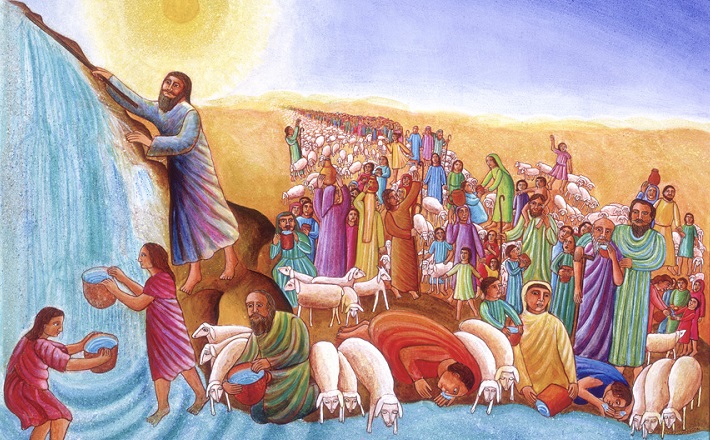Commentary on Revelation 4:1-11
Notes for a four-week preaching series on the book of Revelation.
Week 1 (Aug. 13, 2017)
Preaching text: Revelation 4:1-11; accompanying text: John 17:1-5
God the Creator
Revelation’s vision of the heavenly throne room now introduces people to God, who is the Creator. The scene pictures a rightly ordered universe in which God is at the center. Around the throne are four living creatures, who represent the created order. The creatures’ faces are those of a wild and a domestic animal, a bird, and a human being. The one with the human face does not take the central place of God, but with all creation joins in praise of God. The elders are the heavenly representatives of the community of faith. As they cast down their crowns before the throne, they recognize that God and not the elders is Lord of all. God is praised for being the Creator of all things.
Although Revelation is usually seen as a book of destruction, God’s fundamental identity is that of Creator. This scene anticipates the outcome of the book, where God’s purposes culminate in new creation. The words “holy, holy, holy” and the images of casting down crowns by heaven’s glassy sea have inspired many of the hymns we use in worship. Revelation functions rightly when it invites us into worship too — which we do as we add our voices to the song.
Week 2 (Aug. 20, 2017)
Preaching text: Revelation 5:1-13; accompanying text: John 1:29-31
Christ the Lamb
Revelation’s throne room scene continues with a vision of God holding a scroll in his hand. The scroll presumably expresses the will of God, and the question of who is worthy to make God’s will known. John hears that the Lion is worthy, but when he turns he sees a slaughtered and yet living Lamb. The idea is that the promise of the lion-like ruler from Judah is fulfilled in the promise of the slaughtered Lamb.
The death of Christ is the way that the power of God is unleashed. It is the power of self-sacrifice that builds God’s kingdom by redeeming people of every tribe and nation. The Lamb is the primary way in which Christ is identified in Revelation. Again songs break out in waves. To sing “worthy is Christ the Lamb who was slain” or other songs about the Lamb is to join with the heavenly chorus in worship.
Week 3 (Aug. 27, 2017)
Preaching text: Revelation 6:1-8 and 7:9-17; accompanying text: John 14:1-4
The scenes of praise and celebration in the previous chapters give way to threatening visions. The four horsemen present threats of conquest, violence, economic insecurity, and death. The horsemen portray threats that are real. They were real for people in the first century and remain real for people now. The idea is that the visions strip away the pretensions of security. They point to the deep uncertainties that affect us all. In the chapter itself, the threats intensify until in 6:17 (not in the reading) they ask, who is able to stand?
We might expect the final threatening vision to occur at that point, but it does not. Instead, the threats are halted so that a promise can be given in Revelation 7. John sees who can stand: those who have been redeemed by the Lamb. Being redeemed by the blood of the Lamb does not make the threats go away, but it gives people the promise of life that allows them to stand in the face of the threats, confident that God’s purposes are ultimately for life.
Week 4 (Sept. 6, 2017)
Preaching text: Revelation 21:1-6 and 22:1-5; accompanying text: John 16:20-22
God was introduced as the Creator in Revelations 4 and God’s final great act consists of new creation. The defeat of the forces of evil does not bring about the annihilation of the earth. Rather, it leads to God saying “I make all things new” (21:5). God’s future includes the resurrection of the dead but does not stop there. When death is vanquished creation itself is made new.
God’s future is pictured as a city with a garden at its center. The human world and natural world are reconciled here. The tree of life stands within the city with its gates of pearl. These pearly gates are not guarded by Saint Peter as in the popular imagination. Rather the gates stand open all the time in order to invite people into the presence of God. Here the rivers that give life flow, the tree of life has leaves to heal the nations, and the radiant presence of God illumines the city. This is the future that beckons people everywhere. Those who are gripped by such a vision in turn ask how such scenes of life might shape a way of life now. To live in anticipation of New Jerusalem is to embrace its way of life and to bear witness to the purposes of God, whose work as the author of creation and new creation is ultimately life.


August 13, 2017